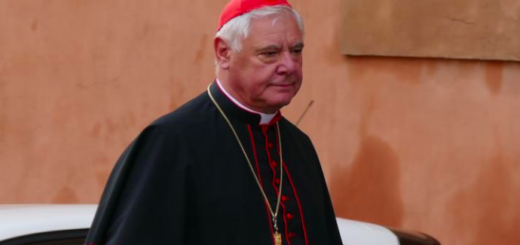What jammed ATM? Secrecy and no Plan B

George Mathew , Khushboo Narayan , in Indian Express,November 14, 2016
 (Note: An excellent step to cut down black money, but very poorly planned and executed, it looks. Was this planned, decided and executed by just one man? Otherwise how could the government change the given assurance that inconvenience to the Aam Aadmi would be only for two or three days, which they had to change every day for something new and now they say ATMs will take 50 more days. This is no way to win public confidence and serve especially the poor man. James kottoor, editor).
(Note: An excellent step to cut down black money, but very poorly planned and executed, it looks. Was this planned, decided and executed by just one man? Otherwise how could the government change the given assurance that inconvenience to the Aam Aadmi would be only for two or three days, which they had to change every day for something new and now they say ATMs will take 50 more days. This is no way to win public confidence and serve especially the poor man. James kottoor, editor).
THE RESERVE Bank of India (RBI) has said the 4,000 currency chests across the country have adequate stocks of notes, but poor logistics and a time-consuming ATM recalibration process have resulted in massive public inconvenience. Senior bankers now say advance preparation and better back-office support could have mitigated this.
Many ATMs have three-four drawers, also called cassettes, in which notes — of Rs 100, Rs 500 and Rs 1,000 — are stacked. Some have just two. Each cassette can identify a particular denomination currency note given certain unique ‘pointers’, and based on the cash available, the ATMs are so programmed to dispense Rs 1,000, Rs 500 and Rs 100 notes in an appropriate combination.
Now, till the cassette holders in the ATMs are reconfigured to identify the new currency notes of Rs 500 and Rs 2,000, they can hand out only Rs 100 notes. This means that instead of one Rs 1,000 note, an ATM has to give ten Rs 100 notes, and instead of one Rs 500 note, five Rs 100 notes.
“If the government and the RBI had increased the circulation of Rs 100 notes in the system over the past couple of months, the transition could have been smoother,” said a banker, who did not want to be named.
“Further, the ‘pointers’ for the new Rs 2,000 note could have been provided in advance, so that one of the three or four cassettes in the ATM could be reconfigured to identify it,” said another banker handling technology. “This could have been done without compromising on the secrecy,” the banker added.
Typically, every drawer or cassette in an ATM can contain 2,500 currency notes. An ATM with three cassettes can carry a maximum of 7,500 currency notes at any given time. Earlier, it was configured to contain Rs 100, Rs 500 and Rs 1,000 notes. Split equally, it could contain Rs 40 lakh.
Now, with just Rs 100 notes, even if all three cassettes are configured to read them, an ATM can contain only Rs 7.5 lakh. With banks unable to fill ATMs with Rs 500 and Rs 2,000 notes, customers have been withdrawing all Rs 100 notes, with many even reportedly hoarding, anticipating a prolonged shortage of required notes in the banking system.
Banks, which were in the dark about the government’s demonetisation move, are struggling to cope with the situation on several fronts. Recalibration of ATMs is a gargantuan exercise which is expected to take, as admitted by Finance Minister Arun Jaitley, up to three weeks.
“The new note specifications are released by ATM OEM manufacturers after extensive testing. To have these recalibrated on all 220,000 ATMs in the country will take some time as engineers will have to physically visit the ATMs for recalibration,” said Ramaswamy Venkatachalam, Managing Director, Fidelity Information Services (FIS), a banking and payments technology provider.
The cash logistics industry employs 40,000 people and 8,800 cash vans to refill 2.20 lakh ATMs in India spread over 650 districts. In a day, this industry serves about 25,000 ATMs. The logistics industry has not only withdrawn old currency notes but also modified the switches of ATMs to dispense mostly Rs 100 currency notes which get depleted in minutes. Over 50 per cent of ATMs in metros and 75 per cent in semi-urban areas were non-functional at any point of time.
“Banks were not told about the size of the notes or the recalibration issue in advance. They should have anticipated such problems but there was no coordination or interaction with the banks ahead of the announcement,” said the CEO of a nationalised bank.
“It’s a logistics and recalibration issue. Of course, we have got time up to end of December. But the initial rush is because people need money to meet their immediate needs. I would think the next one week would be challenging. It’s challenging for people and banks. For us, there’s no closing time. Clear instructions have been given that till the last customer goes, it has to continue… even if it goes right up to midnight,” said a senior official of a bank.
Over 40,000 people have been putting in extra hours for the last few days to refill the ATMs. “This task is unprecedented, and the nation has to come together and see the efforts made by the cash logistics industry and the bank employees to ensure that the public inconvenience is reduced,” said Rituraj Sinha, president of the Cash Logistics Association of India.
Worried over hoarding of small notes, the RBI on Sunday assured that “enough cash in small denominations is also available”. “The RBI urges that public need not be anxious; need not come over to banks repeatedly to draw and hoard; cash is available when they need it,” it said.
When will the crisis blow over? Serpentine queues outside banks and shortage of notes are expected to continue till all ATMs are up and running. “We are in constant touch with the banks and the cash logistic companies to sort out issues on the field quickly and maximise the ATM touch points,” said Venkatachalam.
Small traders and people from the lower strata of the society are severely hit by the currency move. “Go to any queue outside a bank branch, most of them will be domestic helps, drivers, labourers and people without bank accounts. I feel sorry for them. They had to forego one day’s work to stand in the queue for hours to get cash for their daily needs,” said a senior bank official.

















Today 15th November 2016 afternoon, the Economics Affairs Secretary made a number of policy announcements. One was that the government would keep an eye of donations being received by religious institutions / trusts. He also requested that these institutions since their collections are in small currencies, they can deposit these small change in their banks. This will help banks to put into circulation more change.
Only the other day I had mentined that Churches could play a vital role in the present scenario of shortage of change by sharing their Sunday collections with parishioners against receipt of equivalent amount from them.
I had also mentioned in some of my articles that a day will come when church accounts will be subject to scrutiny by the government. Though the Secretary did not specifically mention church accounts, it was covered in his statement. So far churches have turned a blind eye to not implementing Parish Finance Committees (PFCs) as mandated by the Vatican more than fifty years ago.
It appears they do not see the writing on the wall.
Isaac Gomes
In my town of Jabalpur in M.P. there are agents who accept 500 and 1000 rupee old notes and pay back 400 and 800 of 100 rupee denomination. Isn't this grossly illegitimate?
The biggest surprise is that State Bank of India, the lead bank of India, has put its ATM shutters down in most places of Kolkata. The report is that it is similar in other states too. My branch at CIT Road, Kolkata-14, even refused to accept a cheque for deposit to my account. I had to go all the way to Dalhousie Square (BBD Bagh), to drop the cheque in another SBI Branch through collapsible gates. While State Bank of India has let the common man down, ICICI bank has succeeded in getting some of its ATMs working smoothly. This is where its spirit of service speaks volumes.
It is true that banks cannot be blamed for not being able to operate their ATMs for shortage of cash (as SBI Chairman Smt. Arundhati Bhattacharya tried to explain to the common man on the TV regarding the limitation of ATM machines being able to stack at one go a maximum of 2500 Rs 100 notes. This means only 125 persons will be able to draw @ Rs 2,000/- per person (from Monday 14th this limit has been increased to Rs 2,500/- each person). If she knows this limitation, she must ensure enough delivery vans to replenish the cash. Or open extra counters by hiring college students (as temporary staff and for giving them learning experience).
What about the role of the Indian Church in this crisis? It is quite vocal now-a-days on national issues. Being one of the biggest bankers in terms of liquid cash, It can come forward to alleviate some pain of parishioners by disbursing small change out of its cash collection – mainly Sunday Masses. For example if the collection in a church is Rs 10,000/-, it can give out cash at least to 20 persons @ Rs 500/- against receipt of cheques of equivalent amount. The parishes can deposit these cheques from parishioners to their respective bank accounts The richer parishes (mainly in Mumbai, Delhi, Chennai, Bangalore and a few in Kolkata) can serve more people.
Isaac Gomes